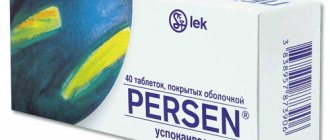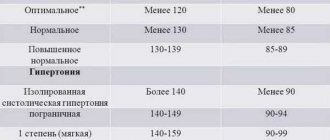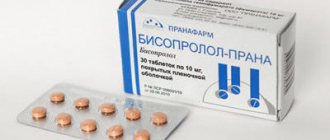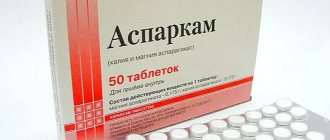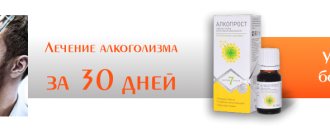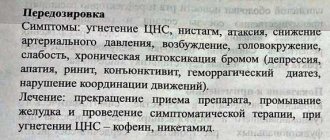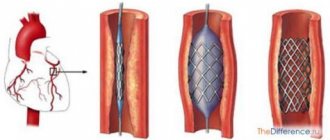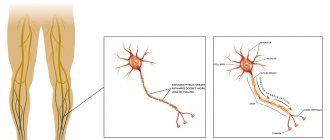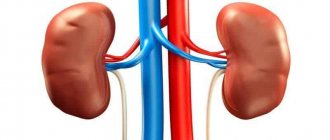For the smooth functioning of the body, a daily supply of potassium and magnesium is required. With a lack of microelements, a person develops heart problems. In cardiology, Panangin or Asparkam are often used.
With a lack of potassium and magnesium, a person develops heart problems; Panangin or Asparkam are often used in cardiology.
Characteristics of Panangin
The drug belongs to the group of drugs based on potassium and magnesium. The active ingredient is aspartate. It has 2 release forms - tablets and solution.
The medicine is a source of potassium and magnesium. Leads to restoration of electrolyte balance, regulation of metabolic and metabolic processes.
It is characterized by a pronounced antiarrhythmic effect on the body. A moderate diuretic effect is observed.
The active substance plays a role in the formation of bonds between macromolecules. Responsible for muscle contraction and myocardial metabolism.
Summary
So which is better - asparkam or panangin? Among the medical community, there is an opinion that of these two drugs, panangin deserves more trust. However, there have been no scientific studies comparing the effectiveness and safety of these drugs.
The composition of both drugs is almost identical, and the active ingredients are simple chemical compounds. That is, there cannot be large differences in pharmacological and pharmacodynamic properties between them. Therefore, many doctors still believe that these drugs should be identical.
Why do doctors give preference to panangin? The point is greater trust in the European manufacturer and the quality control that it uses. Some doctors even believe that domestic companies producing asparkam are not entirely conscientious about the production of medicines, so the actual composition of this drug may not correspond to the declared one.
Action of Asparkam
The medication consists of potassium and magnesium aspartate. Available in tablet form and as a solution for injection.
Has antiarrhythmic properties. Used as an additional source of microelements. Helps restore electrolyte balance.
The active component leads to a decrease in the conductivity and excitability of the heart, improvement of metabolic processes and its susceptibility to cardiac glycosides. Improves coronary blood circulation.
Aspartate penetrates cellular structures, which leads to the formation of amino sugars, amino acids, and nitrogen-containing lipids. Corrects energy metabolism disorders in the heart muscle affected by ischemia.
The active component of Asparkam leads to a decrease in the conductivity and excitability of the heart, improvement of metabolic processes and its susceptibility to cardiac glycosides.
Pharmacodynamics of drugs
Combined use with potassium-sparing diuretics (triamterene, spironolactone), beta-blockers, cyclosporins, heparin, ACE inhibitor, non-steroidal anti-inflammatory drugs significantly increases the possibility of an overdose of calcium ions, which leads to heart rhythm failure and asystole.
Taking potassium-containing drugs together with glucocorticosteroids helps to normalize the electrolyte balance, the disturbance of which is caused by glucocorticosteroids. Due to the normalization of potassium concentration, the negative effects of cardiac glycosides are reduced.
Normalizing magnesium balance reduces the negative effects of eneomycin, polymyxin B, and streptomycin.
Anesthetics help to increase the inhibitory effect of magnesium-containing drugs on the human central nervous system. Co-administration with atracuronium and suxamethonium increases the risk of neuromuscular blockade.
Use with calcitriol leads to an increase in the concentration of magnesium in the body, while the effect of the magnesium-containing drug is reduced.
What are the differences and similarities between Panangin and Asparkam?
Medicines are indicated if patients have poor tolerance to pharmaceuticals that exhibit cardiotonic and antiarrhythmic effects.
The drugs contain the same active ingredient - magnesium and potassium aspartate. Helps replenish missing microelements. Indicated for the treatment of cardiovascular diseases.
The mechanism of action does not differ. Lead to normalization of metabolic processes. Corrects electrolyte imbalances. Reduce the conductivity of the myocardium of the heart. They are characterized by the same list of indications.
Prescribed for the following conditions:
- hypomagnesemia;
- hypokalemia;
- using laxatives or diuretics;
- diarrhea or vomiting;
- taking glucocorticosteroids or saluretics;
- myocardial infarction or heart failure;
- digitalis intoxication;
- ventricular extrasystole;
- atrial extrasystole;
- paroxysmal tachycardia.
They have various contraindications. The instructions for use for Asparkam indicate that the medicine is not used for the following disorders:
- increased susceptibility to the components of the drug;
- oliguria or anuria;
- hypocorticism;
- hypermagnesemia or hyperkalemia;
- metabolic acidosis in acute form;
- cardiogenic shock;
- atrioventricular block of the second or third degree;
- severe myasthenia;
- hemolysis;
- signs of dehydration.
Parenteral use of the drug is contraindicated in childhood, with severe liver failure, and the likelihood of developing edema.
Asparkam is prescribed with caution to pregnant and lactating women, patients with urolithiasis or hypophosphatemia.
Panangin has other contraindications in the form of:
- intolerance to fructose or sorbitol;
- disturbances in amino acid metabolism;
- chronic kidney disease;
- hemolysis;
- exicosis;
- signs of dehydration;
- arterial hypotension;
- myasthenia gravis;
- atrioventicular block;
- hypermagnesemia or hyperkalemia;
- Addison's disease.
During treatment with medications, the patient may experience side symptoms.
Panangin has contraindications in the form of intolerance to fructose or sorbitol.
This process is characterized by:
- the formation of ulcers on the mucous membrane of the digestive tract;
- pain syndrome in the epigastric region;
- diarrhea, stomach bleeding, dry mouth, nausea;
- drop in blood pressure;
- bradycardia;
- hyporeflexia;
- itching and rashes on the skin;
- thrombosis, phlebitis, paresthesia;
- increased sweating;
- asthenia or myasthenia.
There are several differences between the drugs. One of them is the content of active ingredients. Asparkam contains 175 mg of magnesium aspartate, 175 mg of potassium aspartate, potassium and magnesium ions. Panangin consists of 140 mg of magnesium and 158 mg of potassium.
Another difference is the presence of auxiliary components. Asparkam, in addition to active substances, contains talc, starch, calcium stearate, polysorbate. The second medicine includes silicon dioxide, corn and potato starch, and magnesium stearate. The tablets have a coating, which allows the medication to have a more gentle effect on the digestive tract.
Panangin has no age restrictions. It is prescribed to both adults and children.
The drugs differ in the country of production. The first type of medication is produced in Russia and Ukraine. The analogue has undergone a lot of scientific research, since it is produced in Hungary.
Application in the treatment of cardiac pathologies
The human heart makes more than one hundred thousand contractions every day, pumping several thousand liters. The health of this organ is directly related to the endurance of the entire body, as well as its performance.
With a persistent lack of potassium and magnesium, the functioning of many important systems is disrupted:
- the metabolic rate in the myocardium decreases, and the condition of the arteries depends on this;
- the rhythm of heart contractions is lost;
- blood pressure increases;
- Cholesterol is deposited in the vessels involved in supplying blood to the heart.
In addition to the heart itself, these substances, magnesium and potassium, are responsible for the work and functioning of other muscles. A lack of these substances can lead to cramps - painful involuntary contractions of muscle tissue.
Potassium ions are one of the important components for the conduction system of the heart and the myocardium itself . Potassium is responsible for the conduction of impulses and the normal functioning of cell membranes. It promotes the delivery of nutrients to the myocardium.
Taking magnesium significantly reduces the prerequisites for the development of stroke . Ions of this microelement are included in several hundred cell enzyme systems. These enzyme systems are involved in the production of organic compounds.
The optimal combination of magnesium and potassium ions acts complementarily. Together they normalize heart rate and blood pressure. Absorption of substances from Panangin and Asparkam when taken orally occurs quite quickly from the intestinal lumen.
For your information! It is recommended to prescribe Asparkam and Panangin together with medications containing vitamin B6.
Before choosing one of the drugs containing the necessary microelements, it is necessary to analyze the composition, contraindications and other features of use. There is a widespread belief that Panangin is more effective, but we will consider in detail how true this is.
Doctors' opinion
Igor Dmitrievich, 43 years old, cardiologist, Nizhny Novgorod
For heart problems, I recommend taking vitamins from the group, as well as potassium and magnesium. Panangin is considered an effective remedy. The tablets are easily digestible due to the outer shell. They do not cause adverse reactions and have a minimum of contraindications. But the cost is more expensive than its analogues.
Anna Sergeevna, 36 years old, therapist, St. Petersburg
A common cause of myocardial infarction is a lack of potassium and magnesium. To prevent the development of heart problems, I advise you to drink Asparkam for prevention. Cheap and accessible remedy. Available in any pharmacy, because it is produced in Russia.
Side effects
The most common side effects from taking the drug include nausea, vomiting, dizziness and headache. The magnitude and intensity of side effects depends, first of all, on the patient’s medical history and general condition.
In certain cases, the following negative effects may occur after taking medications (both Panangin and Asparkam):
- Decreased blood pressure, tinnitus.
- The occurrence of arrhythmia, bradycardia.
- Diarrhea.
- General weakness of the body - fatigue, lethargy, pain in the muscles.
- Cramps.
- Redness of the face, feeling of heat in the body, a sharp increase in temperature.
- The appearance of ulcers on the mucous membrane of the gastrointestinal tract.
- Allergic reactions - skin rashes, scabies, itching.
The bulk of side effects were recorded when the drug was administered intravenously too quickly. In some cases, antiventricular block (1st degree), respiratory depression, and phlebitis developed.
Also, when using the injection form of the drug, there is a minimal risk of swelling throughout the body. If any of the above effects occur, you should immediately consult your doctor to change the medicine or discontinue it.
What is the difference?
Well, first of all, the country of origin. Asparkam is produced by the countries of the former Union (Ukraine, Russia) - it is like ours, a domestic drug. Panangin is a foreign, bourgeois drug (Hungary), which in some aspects is better than its “brother”.
Foreign friends have always focused on quality (and this is manifested in almost everything, not only in pharmacy), but our compatriots have always focused on accessibility for everyone, cheapness, and more or less acceptable quality, which, in general, is what happens.
Simply put, panangin is of better quality and more effective, asparkam is cheaper, but not too inferior in its effect on the heart.
Tell me more? Our drug is not covered with any protective coating: gastric juice dissolves the active substances, and only the remnants reach the heart, which, by and large, are enough. Plus, due to its low cost, the domestic product can be taken more often. Hungarian panangin is coated: the active ingredients are almost completely delivered by the blood to the heart, where they begin their work. This product needs to be used less frequently.
Another difference that I talk about throughout this article is the price. The foreign analogue costs several times more than ours. Not two, not three, but more. Moreover, the injections themselves are more expensive than the tablets. And if for asparkam the difference is 2-3 times, then for panangin it is 3-4 times the total amount. In short, you'll have to spend money.
The volume of the main active ingredients (potassium and magnesium) in the foreign medicine is almost twice as much as in ours: 300 mg versus 175, respectively. In addition, our pharmacological product is pure potassium and magnesium, while the European one also contains many excipients such as silicon dioxide, povidone, talc and magnesium stearate.
Based on all this, Panangin has an impressive list of contraindications and side effects, while Asparkam has nothing at all. Here's your foreign analogue.
In short, at first glance, foreign medicine for the heart is better, but this is only at first glance: it is more effective, but it is more expensive, it has more contraindications. In addition, the use of asparkam by athletes on an ongoing basis helps maintain the heart, while regular use of panangin can cause an overdose of essential microelements or have unforeseen side effects.
So which is better for the heart?
When it comes to treatment, then panangin is certainly the leader, although asparkam is not far behind: it can also be successfully treated. When it comes to use in sports, then asparkam comes out ahead. In addition, money decides a lot: someone simply cannot afford to buy expensive medicines, but the domestic pharmacy allows this.
My opinion is obvious. Well, if you have additional questions, then ask them in the comments. Or write which medicine you prefer. Do you have friends on social networks? Share this information with them: I think they will find it useful. And don’t forget to subscribe to blog updates yourself - here you can always find useful and reliable information. Wishing everyone a healthy and strong heart, bye.
Contraindications
Indications for the use of Asparkam are due to its therapeutic effects. Why do they take a pill or give an intravenous injection? The product is used:
- with heart failure;
- coronary heart disease;
- period after a heart attack;
- disturbed heart rhythm (extrasystole of the atria, ventricles, atrial, atrioventricular paroxysmal tachycardia);
- overdose, poisoning with cardiac glycosides or poor tolerance of these drugs.
If there is a lack of magnesium, potassium in the blood, caused, for example, by prolonged vomiting, diarrhea, taking drugs that do not conserve potassium, glucocorticoids, laxatives, Asparkam is used until the normal concentration of these elements is normalized
In some cases, the appointment of Asparkam is impossible. When the use of the product is not practiced:
- Hyperkalemia, or too much magnesium in the body. If the normal levels of these substances are exceeded, there are risks of critical disruption of the heart, a decrease in the concentration of sodium and calcium, which also does not bring anything good.
Health and life-threatening conditions are possible. In such a situation, Asparkam is not required; the meaning of its use is lost.
- Severe renal failure. In the sub- or decompensation phase. This is an evaluation category. In fact, the degree of dysfunction is described based on the general health of the patient, after a thorough diagnosis. Laboratory data are taken into account.
Use in patients with renal failure is impossible, since the use of the drug increases the load on the excretory tract. This is a direct path to death or severe disability.
- Dehydration or dehydration. The use of Asparkam triggers a complex biochemical process, during which the sodium concentration drops.
Liquid is removed from the body faster, regardless of its current amount. In patients with dehydration, use of the product will create a life-threatening condition.
- Blockade of the conduction system of the heart. Changing the speed of movement of the electrical impulse from the natural pacemaker (sinus node) to other tissues.
In this case, a change in the concentration of electrolytes can be critically dangerous. It all depends on the form of the pathological process.
In some cases, use is possible. The question of feasibility falls on the shoulders of the cardiologist.
- Individual intolerance to the components of the drug. Allergic reaction to Asparkam and its components. It is relatively rare. The manifestation options are different. From urticaria and skin rashes to Quincke's edema and even anaphylactic shock.
- Polyvalent allergic reaction. Multiple response to drugs. Diagnosed in a small number of people. However, it makes the consequences of taking this or that pharmaceutical unpredictable.
This is a relative contraindication. Application is possible, but with caution. It is recommended to start with the minimum dosage and record the effect. If your health has not changed, there are no signs of allergies, taking Asparkam is acceptable.
Contraindications are few, but strict. The list is incomplete. The possibility of using the medicine in each case is decided at the discretion of the doctor, taking into account the patient’s condition and the expected result of use.
What is better to take - Asparkam or Panangin?
In terms of the effectiveness of the dissolving effect on kidney stones, there is no difference between medications. The choice of remedy depends more on the method of administration. If the patient is going to crush the tablets before use and take them with food, it is more convenient to use Asparkam; for swallowing the tablets whole, it is better to choose Panangin.
In addition, Panangin is safer for gastric and duodenal ulcers, entrocolitis and other gastrointestinal diseases. However, after the protective shell dissolves, the medication will still come into contact with the intestinal and gastric walls, so in case of pathologies of the gastrointestinal tract, caution should be exercised when taking these drugs during or after meals.
Optimal dosage
Drugs in tablet form should be taken only after meals, as gastric juice can reduce the effectiveness of the active substance. The tablets must be taken with warm water.
The dosage, depending on the patient’s condition and age, may look like this:
- For an adult (18 – 50 years old) – 1-2 tablets 3 times a day (no more than 6 tablets per day).
- For older people – 1 tablet 3 times a day.
- For patients with heart failure and other heart pathologies – 1-3 tablets 3 times a day (as prescribed by a doctor).
- To replenish missing minerals in the body - 1 tablet 3 times a day.
The average course duration is from 3 weeks to a month. If necessary, therapy can be resumed or extended. Intravenous injections and infusions are prescribed in emergency cases, as well as in combination cardiac therapy.
To prepare the liquid form of the medicine, use ampoules (1-2 pieces), which are diluted in a glucose solution; if necessary, the solution is reintroduced 4-6 hours after the last procedure.
Differences in the composition of tablet forms
- 0.166 g potassium aspartate hemihydrate salt,
- 0.175 g magnesium aspartate tetrahydrate.
- leavening agents and fillers (starch, talc, silicon dioxide),
- binders (low molecular weight polyvinylpyrrolidone),
- components that make up the shell (polyethylene glycol 6000, titanium dioxide, talc, methacrylic acid copolymer).
In terms of quantitative composition, the difference between Asparkam is difficult to determine due to the fact that under this name Russian companies produce drugs with slightly different dosages and a different set of excipients. As a rule, Asparkam tablets contain 175 mg of potassium and magnesium aspartate.
- Pharmstandard Leksredstva makes Asparkam with a dosage of both aspartates of 0.175 g. These tablets are not coated and do not contain additional components, which reduces the risk of allergies to the drug.
- Pharmapol-Volga production is distinguished by a set of excipients. It contains starch, calcium stearate and talc. The amount of potassium and magnesium aspartates is the same as in Panangin.
- Novosibirsk Pharm produces in a slightly increased dosage - 0.177 g. It is also a non-coated tablet, the additional substances in which are, as in the previous version, talc, starch and calcium stearate.
The line also includes Panangin Forte tablets and solution for injection. In Forte-preparation, the amount of active ingredients is increased by exactly 2 times compared to the usual one.
- 0.452 g potassium hemihydrate salt,
- 0.4 g magnesium salt tetrahydrate,
- purified water.
Depending on the form of release and dosage, the drugs have a fairly wide range of contraindications.
Number of components in one tablet or ampoule
| Component | Asp-m. (tab.) | Pan-n (tab.) | Pan-n Forte (tab.) | Pan-n for intravenous administration |
| Magnesium aspartate salt: | 175 mg | 175 mg | 350 mg | 400 mg |
| Potassium aspartate salt: | 175 mg | 166 mg | 332 mg | 452 mg |
Asparkam is one of the most affordable medicines on our pharmaceutical market. Its cost is in the price category of up to 100 rubles and varies depending on the manufacturer and packaging. 10 tablets from Marbiopharm can be found for 10 rubles. A package from Medisorb (50 pcs.) will cost about 5 times more, and from 7–8 times more.
Panangin is packaged only in 50 tablets. The price of such packaging is from 122 to 145 rubles. The forte version has a pack of 60 pieces, the cost of which will be approximately 2 times more. Ampoules with P. solution (5 pcs.) cost from 147 to 155 rubles.
